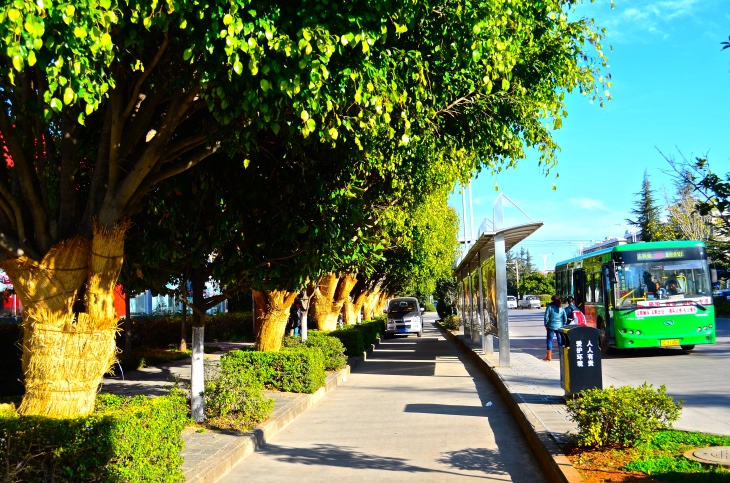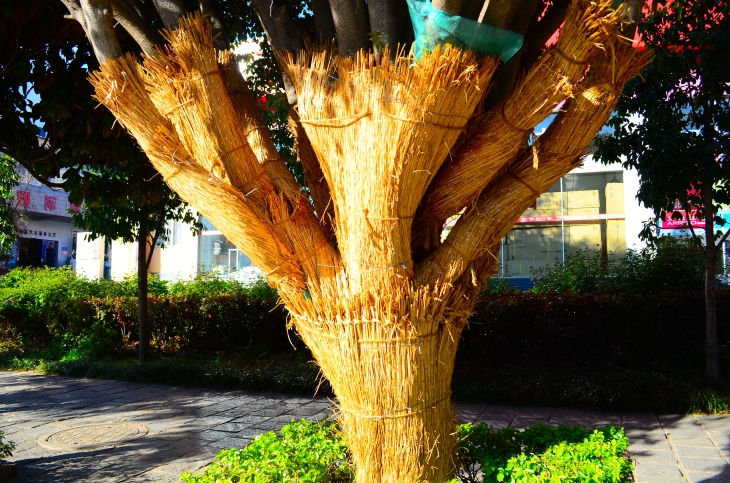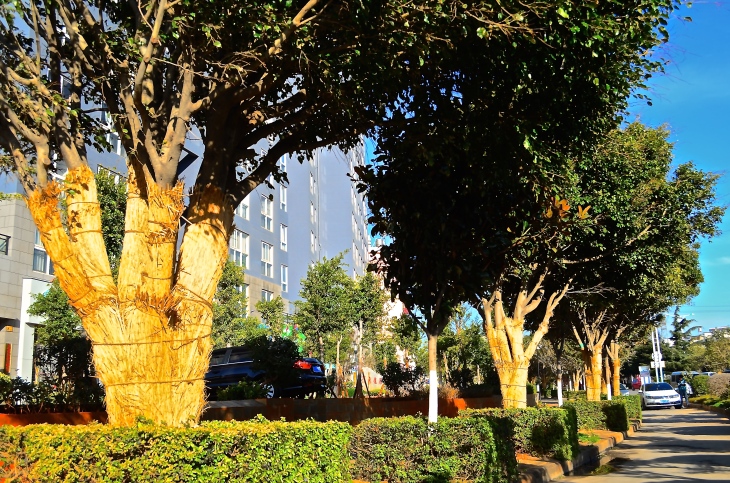
Have you “wrapped” your Ficus today? Ficus trees are very popular here. Not just as indoor plants, but also as outdoor trees along boulevards and in parks. It’s interesting for me to see the effort and attention to detail that goes into caring for these trees. As these photos illustrate, these trees are wrapped in an elaborate and carefully applied organic fabric at the beginning of the “winter” season here. Many other trees receive carefully applied white “paint”. These treatments are necessary for these beautiful trees to survive the relatively cold, dry winters.

The fascinating thing to me is the significant level of resources (labor, materials, and genuine care/effort) that go into this maintenance activity while a number of nearby building exteriors (paint, windows) go largely unkept and unwashed. In the US, it would be more common to see plants/trees left to fend for themselves through the winter months (or lower maintenance plants chosen in the first place), while the buildings/windows were kept much cleaner than here. There is a difference in these behaviors that must be deeply embedded in the local cultures. No explanation just yet, so this is simply an observation report for now!

If you have thoughts on what might explain these contrasting cultural behaviors, please drop me a note at [email protected] or leave a comment (above left). And please note that there is a priority call being made here, since the trees do receive significant attention, while many buildings and windows do not. Therefore, I do not accept the simplistic “labor in China is cheap” explanation that is often given to explain such differences. If it were that simple, the windows would also be clean and the buildings freshly painted!
Copyright © Kevin Beaty, YUNEV and “Feet on the Ground…”, 2015. All rights reserved.
One…is a living organism. One…is not?
Hmm…interesting perspective. Will ask others here what they think about it!
OK, I am told that might be “part” of it…but there’s probably more…
Trees are directly related to the good earth and are a greater priority for protection.
Yes, this is similar to Kathy’s comment and I think it makes a lot of sense. Especially as I’m reminded that the local people have a strong connection with the land…lots of farming and agriculture here.
Could it be to protect the tree from insects & disease? Buildings dont get either.
Great discussion and feedback…really appreciate the comments!
A couple thoughts worth investigating. First, among the Chinese where we lived there was a concept of “perfection” that impacted the maintenance of buildings especially. Since something could not be maintained or restored to its original condition there was little value in maintaining it. Live with it as it is and replace it when you can. This impacted the maintenance of every man-made structure. Secondly, a strong sense of private and public space. Public spaces often suffered from neglect while there was great pride in maintaining the beauty of private spaces. The exteriors of buildings were public space. These are one sentence comments on fairly complicated values but may give you a direction to go. Nothing directly related to why maintenance of one and not the other, but likely relates to earlier comments on the people’s connection to nature.
Thanks Jeff, great input!